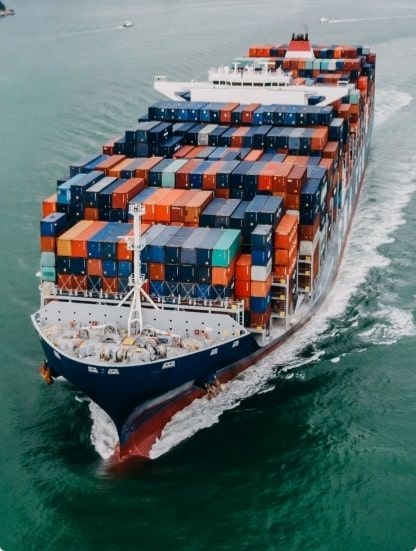Trade between China and Australia continues to grow as businesses seek cost-efficient logistics. Many small and medium enterprises rely on LCL shipping China to Australia to move smaller shipments without paying for a full container. However, understanding costs, customs, and transit times is critical for successful delivery. This article provides a full breakdown of LCL freight options, charges, documentation, and real case studies to help importers make informed decisions.
What Is LCL Shipping from China to Australia?
Less than Container Load (LCL) shipping refers to combining smaller shipments from multiple shippers into one container. Accordingly, each business pays only for the space used, making it economical for low-volume imports.
Why Choose LCL Shipping Instead of FCL?
Although Full Container Load (FCL) may seem more straightforward, LCL is better suited for small or medium cargo. Additionally, it eliminates the need to wait until you can fill an entire container. On the other hand, LCL can face delays during consolidation and deconsolidation.
How Much Does LCL Shipping Cost from China to Australia?
LCL costs are calculated by volume (CBM) or weight, whichever is greater. Below is an average estimate:
| Shipment Type | Average Rate (USD) | Transit Time (Days) | Pros | Cons |
|---|---|---|---|---|
| LCL Sea Freight | $50–70/CBM | 28–38 | Flexible, affordable | Slower, risk of delays |
| FCL 20GP | $1,200–1,500 | 25–35 | Exclusive use, secure | Higher cost for small loads |
| Air Freight (100kg+) | $5–8/kg | 5–8 | Fast, reliable | Expensive for bulk shipments |
Which Shipping Routes Are Most Popular?
- Shanghai → Sydney / Melbourne: Most common sea freight lane.
- Shenzhen → Brisbane: Ideal for electronics and textiles.
- Ningbo → Fremantle (Perth): Convenient for western Australia.
Moreover, air freight routes such as Guangzhou → Sydney remain popular for urgent cargo.
How Long Does LCL Shipping Take from China to Australia?
| Route | Mode | Transit Time |
|---|---|---|
| Shanghai → Sydney | Sea LCL | 28–32 days |
| Shenzhen → Melbourne | Sea LCL | 30–35 days |
| Ningbo → Brisbane | Sea LCL | 32–38 days |
| Guangzhou → Sydney | Air | 5–8 days |
Without a doubt, air freight offers unmatched speed, but sea LCL provides the best cost-to-volume ratio.
What Documents Are Needed for LCL Shipping?
Importers must prepare the following paperwork:
- Bill of Lading
- Commercial Invoice
- Packing List
- Certificate of Origin
- Import Declaration
- Any licenses for restricted goods
To illustrate, accurate documentation avoids customs delays and penalties.
What Are the Pros and Cons of LCL vs Other Modes?
| Mode | Pros | Cons |
|---|---|---|
| LCL | Low cost, flexible, pay per CBM | Risk of delays, more handling |
| FCL | Secure, predictable, cost-effective | Requires large cargo volume |
| Air Freight | Fast, reliable, low risk of damage | High costs, limited by weight |
How to Reduce LCL Shipping Costs?
- Book shipments early, especially before peak seasons.
- Consolidate cargo from multiple suppliers into one LCL shipment.
- Choose nearby Chinese ports such as Shenzhen or Ningbo.
- Compare quotes from different forwarders.
- Negotiate Incoterms (FOB vs CIF vs DDP).
Real Case Studies
Case 1: Electronics (Shenzhen → Melbourne, LCL Sea Freight)
- Cargo: 12 CBM consumer electronics
- Cost: $55/CBM → $660 total
- Transit Time: 32 days
The forwarder consolidated multiple shippers into one container and arranged DDP delivery.
Case 2: Garments (Shanghai → Sydney, Air Freight)
- Cargo: 500 kg fashion apparel
- Cost: $6.2/kg → $3,100 total
- Transit Time: 6 days
The forwarder managed customs clearance and quick warehouse transfer.
Conclusion
Selecting the right LCL shipping China to Australia solution saves money, improves efficiency, and minimizes risks. Businesses should compare carriers, shipping routes, and forwarder services before finalizing shipments. With strategic planning, importers can take advantage of competitive freight rates and reliable transit times for smooth international trade.
- Consult TJ China Freight Forwarding for the lowest quote. They will provide you with reliable, cost-effective service.
FAQ:
Q1.:What is the cheapest way to ship from China to Australia?
The cheapest method is sea freight via LCL shipping, especially for volumes under 15 CBM, balancing cost and efficiency.
Q2.How long does LCL shipping take to Australia?
Transit time averages 28–38 days depending on port pairings and customs clearance speed.
Q3.Can I ship dangerous goods via LCL from China?
Yes, but you must declare and follow IMDG guidelines. Forwarders ensure compliance with Australian import laws.
Q4.Do I need insurance for LCL shipping?
Cargo insurance is recommended since LCL involves more handling. It covers losses or damages during transit.
Q5.Which Incoterms are common in China–Australia trade?
FOB, CIF, and DDP are widely used. The choice impacts responsibilities and cost-sharing.



